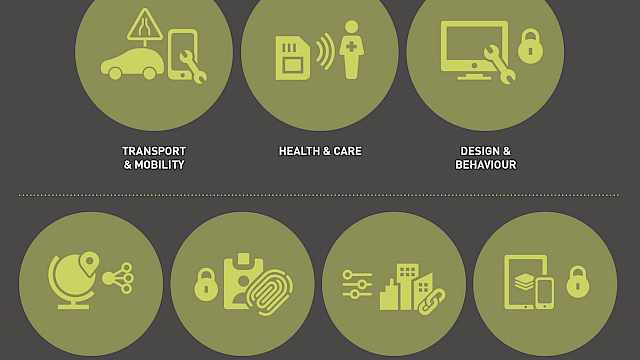Since 2012, the UK government has used the Channel process to bring multiple agencies together to help prevent vulnerable people from being drawn into violent extremism. The VAF is an assessment guide used as part of the Channel process to identify an individual’s vulnerability to becoming involved in (violent) extremism. Channel seeks to identify those at risk, assess the nature and extent of that risk, and develop suitable support plans to mitigate the risk. VAF assessments are required to inform decisions regarding whether and how to intervene with such individuals to prevent them from becoming radicalised and progressing further towards harmful behaviour.
Through a practitioner survey (n =181) and semi-structured interviews (n =13) we looked at the real-world use of VAF in existing risk assessment and management practice within Channel and developed a picture of:
- Practitioner backgrounds.
- Experiences of using, writing, and gaining information for the VAF.
- The availability, utility and forms of training and guidance.
- Potential improvements to be made.
- Barriers to the risk assessment and management process.
Respondents requested the inclusion of a summary conclusion section, a management plan section and a section dedicated to noting significant changes between VAF assessments.
The results
Most survey participants agreed or strongly agreed that each of the VAF’s 22 factors were useful for understanding the overall risk in most cases. However, respondents commonly expressed that the VAF needs to be more user friendly and could be condensed through reviewing and re-sorting risk factors. Respondents requested the inclusion of a summary conclusion section, a management plan section and a section dedicated to noting significant changes between VAF assessments.
Interviewees clearly and consistently expressed a need for an instrument to assist in decision-making. Various benefits include ensuring the assessor:
- Does not miss crucial details.
- Thinks of issues that did not immediately spring to mind.
- Makes the results easier to digest by focusing the mind on three core areas.
- Specifies why factors are irrelevant, thereby helping the bigger risk assessment.
- Provides record-keeping and justification of actions conducted.
The importance of training was evident. Some interviewees mentioned elements of the VAF are less applicable to those individuals with a mixed or unclear ideology, those who are non-aligned with a specific group (e.g., potential lone actors), and those interested in school shootings. Suggestions for standardised training included:
- Practising filling out a real case and submitting the workings for feedback.
- The practice of formulation and other fundamentals of risk assessment and management.
- Greater focus on the factors and how to interpret them in different ideological contexts.
- Demonstrations of good and poorly completed VAF assessments.
- Refresher training.
- Technical guidance on operating the relevant computer systems the VAF sits on and interacts with.
- Overviews of available interventions to choose from.
Of course, all of this has immediate resource implications. While official training is available, some local areas conduct mock VAF exercises on previously concluded cases that they feel are beneficial because of its safe environment. Other local initiatives additionally provide their own training to Channel panel chairs and partners and share VAF best practice at regional meetings.
Many participants noted how long and potentially unwieldy the VAF is and questioned whether there was a need for so many factors, especially when compared to other instruments used in other parts of policing. However, others felt that with sufficient time and investment, the VAF becomes more useful, overcoming initial feelings of being overwhelmed.
We asked participants about the ease or difficulty in determining the presence of risk factors. Largely, the consensus was that there is no one particular factor that is consistently harder to obtain information on than others. However, online information is difficult to obtain for many practical and technical reasons. The ease of gathering information is case-dependent and highly reliant on building good relationships with local partners.
Many factors become easier to glean information on once the individual is engaging first-hand with the process. For example, issues concerning grievance/injustice, access to networks, and potentially substance misuse are unlikely to be held by partner agencies. Although engagement with Channel is voluntary, individual engagement levels can vary and if low, determining the presence of these factors becomes very difficult. Other factors might be difficult to glean information on for adults (e.g., family attitudes) because families are typically not consulted in such cases.
Conclusions
Findings derived from the practitioner survey and interviews demonstrate the need to:
- Update guidance documents to demystify some parts of the process.
- Build greater clarity around risk factors.
- Make the practitioner using the VAF feel they are being action-oriented toward building a management plan, rather than simply being a filler of forms.
The VAF is now deployed in a different context than it was built for. The rise of new extremist entities, the morphing of old ones, the rise of the online space as a contributing factor, and the adoption of smaller low-tech and less-sophisticated terrorist plots, may mean some of the guidance requires a re-write. Such a re-write may include considerations of protective factors, comments regarding the relevance of risk factors in each case rather than their simple presence and mention a suite of other issues brought up in the surveys and interviews above.
Evaluations such as ours, and excellent ongoing research by many colleagues on protective factors and new threats can help ensure tools such as the VAF stay up to date and continue to provide valuable information to agencies involved in managing terrorist risks.
Paul Gill is Professor of Security and Crime Science at University College London.
Dr Zoe Marchment is a postdoctoral research associate at University College London.
Copyright Information
Image credit: Adapted from blankstock | stock.adobe.com







